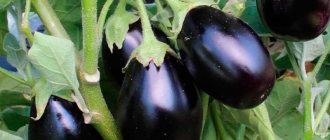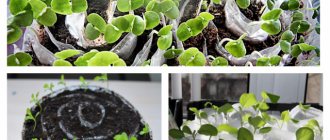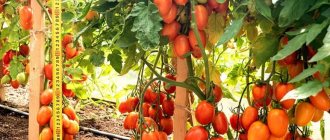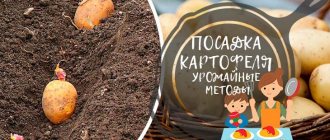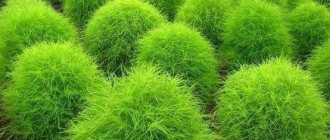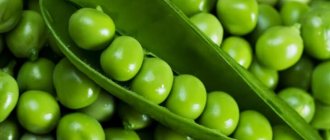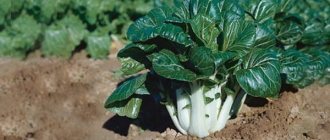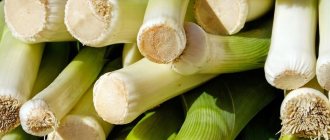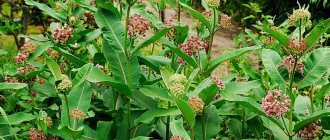Eggplant is a perennial crop, a close relative of potatoes and peppers. Many people are interested in what family eggplant belongs to. The nightshade family is represented not only by various types of grasses and creeping plants, but also by the “little blue” ones. A few centuries ago, this vegetable caused surprise due to its overseas origin. Today it is so widespread in our country that it is grown in almost every summer cottage. You can prepare many delicious and healthy dishes from the fruits - caviar, sauté and amazing Greek moussaka.
Origin of eggplant
Eggplant belongs to the nightshade family along with tomato, potato and tobacco. Like many members of this family, the fruit of the eggplant is a berry. However, from a culinary point of view, it is classified specifically as a vegetable. Therefore, the answer to a question that interests many will depend on the context.
Where do the “little blue ones” (as people call eggplants) come from? Their homeland is India and South Asia, where wild species of this plant can still be found. Europeans tried and began to actively grow eggplants only in the 19th century. In our country, it is bred in areas with a favorable climate: in the Krasnodar Territory, Astrakhan and Rostov regions.
Title [edit | edit code]
The specific epithet of the plant is melongena
comes from the Sanskrit
vatin ganah
, which gave the name of this fruit in other languages: Persian بادنجان (“
badinjan
”) and Arabic باذنجان (“
bazinjan
”, with the definite article - “
al-bazinjan
”).
From Arabic the word came into Spanish as alberengena
(“
alberengena
”), and from there it passed into French as
aubergine
(“
aubergine
”).
In Latin and Italian,
bazinjan
changed
respectively to
melongena
and
melanzana
which
has been erroneously interpreted as
mela insana
"
crazy apple".
In Portuguese, this vegetable was called bringella
(“
brinjal
”), and, thanks to active trade between Portugal and India, this name “returned” to its homeland, but in the form “
brinjal
”.
In the West Indies, the Portuguese name changed to
brown
- jolly
.
The Russian “eggplant” most likely comes from the Turkish patlıcan
(“
patlyjan
”, in turn, which is a borrowing from the Persian language) or the Tajik “باقلجان/
boklakon
”.
Eggplant is sometimes called Armenian cucumber
(not to be confused with the Armenian cucumber - a type of melon). A.-B. Clo, traveling around Egypt and describing garden plants, noted that in this country there are two types of Armenian cucumber - white (Bidinjan abad) and purple (Bidinjan esuet).
Characteristics
Eggplant (or nightshade) is a perennial herbaceous plant. The bush is spreading, up to 150 cm high. Nightshade usually blooms in the summer. Fruit ripening, as a rule, occurs 100-150 days after germination.
According to its botanical characteristics, the fruit is a complex berry. The weight of such berries reaches 2 kg, and the color can be different and depends on the variety: they can be the usual purple color (see photo), white, yellow and dark green. Inside the fruit are small round seeds that ripen in late summer or early autumn. The fruits are consumed in the technical ripeness phase - before the seeds ripen. The eggplant bush has a powerful root system; its diameter can reach 2 m.
The fruits have high nutritional value. 100 g of the edible part of eggplant contains on average 0.5-1.5 g of protein, 0.1-0.5 g of fat and 4-5 g of carbohydrates. The average calorie content is 24 kcal per 100 g of product, which allows it to be classified as a low-calorie product.
“Blue” ones are rich in vitamins B and C; they contain vitamins A, K and PP in lower concentrations. Eggplant fruits also contain iron, phosphorus, copper and a large amount of potassium (up to 240 mg per 100 g).
Is a tomato a fruit?
The concept of fruit appeared relatively recently, at the beginning of the 18th century. Before this, all fruits were divided only into vegetables and berries. By the way, even the word “fruit” itself comes from the Latin “fructus”, which translates as “fruit”.
And this term is not botanical, but rather economic.
In other words, people themselves decided to classify certain types of fruits into a separate category. And the main distinguishing characteristic was the taste - the fruits are sweet and juicy, and the size - the fruits are larger than berries.
All fruits are divided into several categories:
- Rosaceae – apple, pear;
- Citrus fruits – orange, lemon, tangerine;
- Stone fruits – plum, apricot, peach;
- Subtropical - persimmon, feijoa, fig, pomegranate;
- Tropical - banana, papaya, pineapple.
The tomato does not fit into any of this categories. This means that this fruit cannot be considered a fruit.
Benefits and harms
Thanks to the vitamins and minerals contained in eggplants, their systematic consumption has a positive effect on human health:
- prevents the formation of blood clots;
- reduces blood pressure;
- has an antibacterial effect thanks to vitamin C;
- reduces blood cholesterol levels;
- Due to its low calorie content and minimal fat content, eggplant is considered a dietary product and is used for weight loss.
The “little blue” ones have almost no harmful properties. However, people with gastritis or ulcers should eat eggplants with caution - their digestion may not be able to cope with the coarse fiber of the vegetable.
You should not overcook eggplant, because its pulp tends to accumulate fats and carcinogens.
The overripe fruit is saturated with the poison solanine, which causes nausea, vomiting and diarrhea.
Important! Overripe eggplants become covered with brown spots, they have an excess of seeds, and the stalk looks rotten. White eggplants contain the least amount of solanine.
Interesting Facts
All about eggplant - in the program of Elena Malysheva
Interesting facts about eggplant, its origin and properties:
- Wild eggplant can be found in the homeland of dark nightshade, Myanmar (formerly Burma).
- The name of the purple beauty sounds completely different in some languages. In Arabic it is heard as "bazinjan", in Spanish - as "alberenjena". In Italy, “melantiana”, which was once mistakenly turned into mela insana, which literally translates as “crazy apple”.
- Most likely, the ancestor of the Russian word “eggplant” was the Turkish name “patlyjan” or the Tajik name “boklachon”.
- The smell of a raw nightshade is similar to mushrooms. Ready-made vegetables, fried or stewed, may taste like calf or chicken.
- Eggplant is very useful for gout and atherosclerosis. The abundant potassium content contributes to the smooth functioning of the heart muscle and the restoration of water balance in the human body. It is believed that frequent consumption of purple berries promotes the elimination of uric acid, normalizes cholesterol levels and the functioning of the gastrointestinal tract.
- Due to its low calorie content, a relative of tomato and potato is considered a dietary product with a fairly high protein content. The energy value of the vegetable is no more than 25 kcal per 100 grams.
- To remove the bitterness from eggplant, soak it in salted water before cooking.
Algorithm and features of cultivation
Growing eggplant is a challenging task even for an experienced farmer. This plant has a long growing season (100-150 days), so you should start sowing in early February. Considering the whimsical nature of the southern guest, you will have to use the seedling method and plant the plant in a greenhouse.
To grow eggplants you will need:
- Prepare the soil for seedlings. You can use either a special store-bought one or prepare it yourself from humus and turf in a 2:1 ratio.
- Soak the seeds for 12 hours. This will improve their germination.
- Plant the seeds 2 cm deep in the soil, water and cover with film.
- As soon as the first shoots appear, remove the film.
- After a week, transplant the seedlings into open ground.
- Care for plants: regularly loosen and water the soil; eggplants love water.
- Fertilize the bushes three times during the summer using a mixture of mineral and organic fertilizers.
- Pay attention to hilling and weed control to get higher yields.
- Don't forget about the benefits of mulching. It accelerates ripening by a whole week, increases yield by 30%, and most importantly, protects plants from the harmful effects of the external environment and pests. Mulch can be organic (hay, grass, pine branches) and inorganic (polyethylene, roofing felt). You can also use waste paper and cardboard for mulching. The mulch is spread evenly between the bushes.
- As soon as the fruits have a characteristic glossy shine, it is time to harvest.
How to select and store
If you have not bothered with growing eggplants yourself or do not have such an opportunity, then it is worth knowing the rules for choosing them when purchasing. Carefully examine the fetal body: there should be no damage, dents or suspicious spots on it. The vegetable itself should be quite firm. You should not take soft fruits: most likely, they are overripe or rotten.
It is better to store eggplants in the refrigerator without any container that blocks the access of oxygen for several weeks. If you want to preserve the fruits for a longer period, it is better to wither or pickle them.
Why is it believed that watermelon is a berry and not a fruit or vegetable?
Many people believe that watermelon is a fruit. And they are wrong. Watermelon is actually a berry. Strange, isn't it? After all, we are all accustomed to the fact that berries are small and do not have a hard peel. Why is watermelon a berry?
In botany, a berry is a fruit with a thin peel, juicy pulp, a large number of seeds, and, most importantly, is formed from the upper and lower ovaries. In any other case, such a fruit is a false berry. Berries, for example, include tomato and eggplant.
According to its main characteristics, watermelon also belongs to the berries, or more precisely, to the subspecies called “pumpkin”. Pumpkins include melons and cucumbers, however, they are not berries. For this reason, some botanists doubt that watermelon is a berry, classifying pumpkins as a separate species rather than a subspecies of berries. And they call all plants related to pumpkins berry-shaped due to their similarity to berries.
And finally, we will give some tips on choosing a watermelon.
Applications of eggplants
There are many different eggplant dishes. You can do anything with them: boil, fry, stew, dry-dry, grill, pickle. The most popular dish made from this vegetable in our country is eggplant caviar.
To prepare it you will need:
- eggplants - 600 g;
- onion - 1 pc.;
- medium carrots - 1 pc.;
- large tomato - 1 pc.;
- large garlic - 1 clove;
- parsley - a couple of sprigs;
- vegetable oil - 3-4 tbsp. l.;
- salt, sugar, ground black pepper - to taste;
- tomato ketchup (optional) - 1-2 tbsp. l.
Preparation:
- Wash and dry the vegetables, peel the carrots and onions.
- Pour vegetable oil into a heated frying pan, add chopped onions and carrots, fry for 5-6 minutes.
- Add diced eggplant, lightly fry it, add half a glass of water, cover with a lid and simmer over medium heat for 10 minutes, stirring.
- When the eggplant becomes soft, add the coarsely grated tomato and discard the skin. Salt, pepper, add a little sugar and cook for another 10 minutes.
- Add chopped herbs and garlic. Stir and cook for another minute.
- Allow the caviar to cool slightly, transfer to a blender and puree until desired: smooth or with small pieces. You can add more salt, sugar or pepper to taste.
- Place the finished eggplant caviar in a deep bowl, cover with cling film and refrigerate for a while to allow the flavors to mix, although you can serve immediately.
Advice. In this case the color will turn out natural. If you want a richer red color, add a little ketchup or tomato paste at the stage along with the grated tomato. You can also add 1 tsp to classic eggplant caviar for color. red ground paprika.
